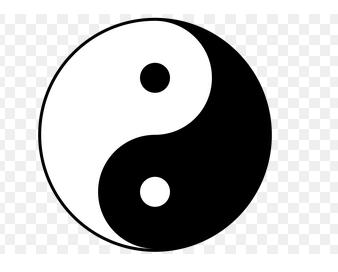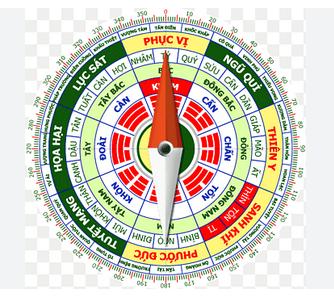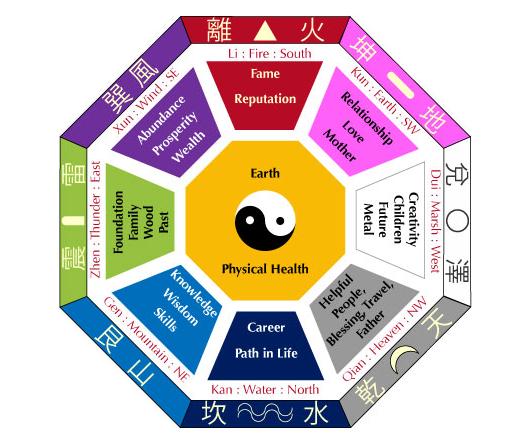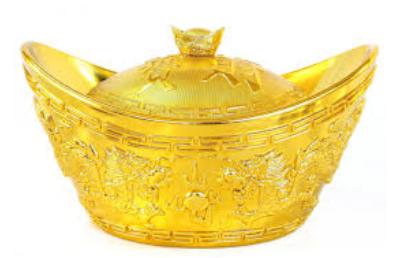The Art and Science of Feng Shui: A Comprehensive Exploration
Feng Shui, often translated as “wind and water,” is an ancient Chinese practice that seeks to harmonize individuals with their surrounding environment. The term itself is symbolic, representing the natural elements that affect the flow of energy or Qi (pronounced “chee”) through spaces, influencing everything from health and relationships to prosperity and personal well-being. Feng Shui is not just an aesthetic principle but rather a holistic system grounded in philosophy, science, and environmental psychology.
Over thousands of years, Feng Shui has evolved from a form of geomancy, or divination using the earth’s energies, to a rich and complex set of guidelines for living in harmony with the world around us. Whether applied to home design, architecture, or office arrangements, Feng Shui has been practiced to create spaces where people can thrive.
In this essay, we will delve into the art and science of Feng Shui by exploring its history, principles, tools, techniques, and practical applications.
1. The Origins of Feng Shui: A Historical Overview
Feng Shui’s roots can be traced back to ancient China, where it began as a form of geomancy—an attempt to understand the relationship between humans and the earth’s natural forces. The practice was first documented around 3000 BCE in the Zhou Li (Rites of Zhou), a text outlining various governmental and ritual procedures in early Chinese society. The earliest practitioners of Feng Shui were concerned with the positioning of graves, as they believed that the correct placement of tombs could attract good fortune and ensure the continued well-being of descendants.
The foundational philosophy of Feng Shui is deeply influenced by Taoism, which emphasizes the importance of living in harmony with the natural world. Taoist principles such as the balance of Yin and Yang (the dual forces of opposites) and the flow of Qi are central to Feng Shui practice. Qi, often described as the life force or vital energy that flows through all things, is considered to be essential for health, prosperity, and success. In order to live harmoniously with this energy, it is important to arrange one’s environment in ways that optimize the flow of Qi.
As the practice developed, Feng Shui became more complex and integrated with other philosophical systems like Confucianism, Buddhism, and Chinese medicine. By the Tang Dynasty (618–907 CE), Feng Shui had become an integral part of Chinese culture, influencing the design of cities, homes, and temples. Throughout history, it evolved and spread beyond China to other East Asian countries such as Taiwan, Hong Kong, Korea, Japan, and Vietnam.
2. The Two Main Schools of Feng Shui
There are several schools of thought within Feng Shui, but the two most prominent are the Form School and the Compass School. Each focuses on different methods of analyzing and enhancing the flow of Qi in an environment.
Form School
The Form School of Feng Shui is based on the idea that the physical form of the environment, such as the shape of the land, the positioning of mountains, rivers, and buildings, can greatly influence the flow of Qi. Practitioners of the Form School analyze the natural landscape and aim to align human dwellings with the patterns of nature. For example, homes should ideally be positioned with a supportive mountain behind them and open space in front to allow for a free flow of Qi. The Form School emphasizes the importance of protecting oneself from harmful energies, such as those found in sharp corners or other irregular forms that disrupt the flow of Qi.
Compass School
The Compass School of Feng Shui, on the other hand, is based on the use of a compass (also known as a Luo Pan) to analyze the directionality of Qi. This school involves a more complex system of calculations that considers the orientation of buildings, the presence of certain stars (known as flying stars), and the relationship between the elements and directions. The Compass School uses an astrological system based on the Chinese solar calendar and the Five Elements to determine the optimal layout of spaces. It is more mathematically oriented than the Form School and can be used to refine and adjust the specific energies of individual rooms or areas within a home or building.
3. The Core Principles of Feng Shui
Feng Shui is guided by several core principles that can be applied universally to any space. These principles are intended to create balance, encourage the flow of positive energy, and minimize the impact of negative forces.
Qi (Chi) – The Flow of Energy
Qi is the central concept in Feng Shui. It is the invisible life force that flows through all living things and the environment. A harmonious flow of Qi promotes good health, prosperity, and peace. In a Feng Shui context, the goal is to ensure that Qi flows freely throughout a space. Stagnant or blocked Qi can lead to negative effects on one’s life, such as health problems, financial difficulties, or relationship issues. On the other hand, too much Qi (excessive energy) can result in chaos or overwhelm. Proper Feng Shui seeks a balanced flow of energy.
Yin and Yang – The Balance of Opposites

The Taoist principle of Yin and Yang describes the interconnectedness of opposite forces in the universe. Yin is the passive, receptive, and feminine aspect, while Yang is the active, assertive, and masculine aspect. In Feng Shui, these two energies must be balanced in any environment to promote harmony. Too much Yin energy in a space can result in stagnation or melancholy, while too much Yang energy can create restlessness or aggression. For example, a bedroom should have more Yin energy (soft, calming colors, gentle lighting) to promote rest and relaxation, while an office might benefit from more Yang energy (bright lighting, stimulating colors) to foster productivity and focus.
The Five Elements – Wood, Fire, Earth, Metal, and Water

In Feng Shui, everything in the universe is made up of five primary elements: Wood, Fire, Earth, Metal, and Water. These elements are interconnected, and each has a specific role in maintaining balance and harmony. Each element also corresponds to different areas of life and specific directions in the Feng Shui bagua (a map used to assess a space’s energy).
- Wood symbolizes growth, vitality, and expansion. It is associated with the east and southeast and governs the family and health aspects of life.
- Fire represents passion, transformation, and energy. It is linked with the south and influences fame, recognition, and leadership.
- Earth stands for stability, nourishment, and grounding. It is connected to the center of a space and governs relationships, health, and balance.
- Metal symbolizes clarity, precision, and efficiency. It is linked with the west and northwest and governs creativity, children, and helpful people.
- Water represents abundance, flow, and renewal. It is associated with the north and governs career and life path.
In Feng Shui, it’s essential to balance these elements in each room and space according to the needs of the occupants.
4. Feng Shui Tools and Techniques
Feng Shui practitioners use a variety of tools and techniques to assess and adjust the energy of a space. Two of the most common tools are the Luo Pan (Feng Shui Compass) and the Bagua Map.
The Luo Pan (Feng Shui Compass)

The Luo Pan is a traditional Feng Shui compass that helps practitioners determine the directions and alignment of a building or room. It is a highly specialized instrument that consists of multiple concentric rings, each representing different elements, directions, and stars. By taking precise measurements with the Luo Pan, a practitioner can assess the flow of Qi, the influence of certain elements, and the energetic interactions between different areas of the space. The Luo Pan is an essential tool for the Compass School of Feng Shui.
The Bagua Map

The Bagua Map is a tool used to divide a space into nine areas, each corresponding to different aspects of life, such as career, wealth, relationships, and health. The Bagua is placed over the floor plan of a home or office to determine which areas need attention or adjustments. The map divides the space according to the eight cardinal directions (north, south, east, west, northeast, northwest, southeast, southwest) and the center, which represents balance and harmony.
Each sector of the Bagua is also associated with a specific element, color, and number, allowing for adjustments that can enhance specific aspects of one’s life. For example, the wealth corner is located in the southeast area of the home, and placing symbols of abundance (such as a plant or a water feature) can attract prosperity.
5. Practical Applications of Feng Shui
Feng Shui can be applied to virtually any space, from homes and offices to gardens and urban planning. Here are a few common applications:
Home Feng Shui

When applying Feng Shui to a home, the primary goal is to create an environment that supports well-being, restful sleep, productive work, and harmonious relationships. Key areas to focus on include:
The Front Door: The entrance to a home is seen as the “mouth of Qi,” where energy enters. A clean, well-lit entrance with no obstacles is essential to attract positive energy.
The Bedroom: The placement of the bed is crucial for restful sleep. It should be positioned so that the occupant can see the door while lying in bed but not directly aligned with it. The bed should also be placed against a solid wall for support.
The Kitchen: The kitchen is often considered the heart of the home, where nourishment is prepared. Feng Shui suggests that the stove should be placed in a commanding position, with a clear view of the door, to encourage prosperity and health.
Office Feng Shui

For offices, Feng Shui aims to increase productivity, creativity, and overall well-being. Some tips include:
Desk Placement: Your desk should be placed in a position where you can see the entrance to your office without being directly in line with the door, a position known as the “command position.” This arrangement helps you feel empowered and in control of your workspace. Ideally, your back should be supported by a wall or a solid structure, which provides stability and security.
Lighting and Airflow: Proper lighting is essential for a positive work environment. Natural light is ideal, but if that’s not possible, bright, well-distributed artificial lighting can help maintain energy levels. Additionally, good airflow is crucial for the free flow of Qi. Stale or stagnant air can lead to mental fatigue and poor productivity, so incorporating plants or air purifiers can enhance the atmosphere.
Clutter Control: Clutter is considered a significant barrier to the flow of positive Qi. A tidy, organized desk and workspace promote clarity, focus, and a sense of control. Keeping the office organized and free of unnecessary items helps maintain mental and emotional balance.
The Power of Symbols: In Feng Shui, symbols of success and prosperity can have a strong effect on your mindset and motivation. For example, placing a small plant or a bowl of fresh fruit on your desk can symbolize growth and abundance, while a crystal or piece of art representing your goals or aspirations can help you stay focused and inspired.
Feng Shui for Gardens and Outdoor Spaces

Just as the interior of a space can be aligned with Feng Shui principles, so too can gardens and outdoor environments. In fact, the interaction between indoor and outdoor energy is an important aspect of creating a harmonious living environment.
- Water Features: Water is a powerful element in Feng Shui, symbolizing abundance, wealth, and the flow of Qi. A well-placed water feature, such as a fountain or pond, can attract positive energy to your home, especially if it is located in the career or wealth sector of your garden or yard. However, the placement of water features should be mindful of their direction, as flowing water should always move toward your home to invite prosperity.
- Paths and Walkways: Paths in your garden or yard should be smooth and gently curving. A straight path can create an abrupt, rushed flow of energy, while winding paths encourage a more balanced and harmonious flow. Additionally, make sure that paths are well-maintained, as neglected areas can lead to stagnant Qi.
- Plants and Trees: Plants bring life and vitality to any space. When selecting plants for your garden, choose healthy, vibrant plants that represent growth and prosperity. Trees, particularly large and leafy ones, are considered to be especially auspicious, symbolizing long-term stability and strength. However, avoid thorny or spiky plants like cacti, as they can disrupt the flow of positive energy.
6. Feng Shui in Modern Times: Adapting Ancient Principles for Contemporary Living
In today’s world, the practice of Feng Shui has undergone significant adaptation as it has moved beyond its traditional Chinese roots and become widely embraced in Western and global cultures. People now use Feng Shui not only for traditional practices, such as home placement and burial, but also as a lifestyle tool for promoting health, success, and personal well-being. Here are a few ways that Feng Shui is being integrated into modern living:
Feng Shui in Urban Planning and Architecture
Modern architects and urban planners have begun incorporating Feng Shui principles into city designs and large-scale buildings. In crowded cities where space is limited, thoughtful urban planning can play a key role in improving residents’ quality of life. City layouts that consider the natural landscape, airflow, and sunlight can positively impact the energy of a neighborhood or district.
- Sustainable Design: Many of the principles of Feng Shui align closely with sustainable design practices. For example, designing buildings with an emphasis on natural light, proper ventilation, and the use of eco-friendly materials not only enhances the flow of Qi but also promotes environmental harmony. Green architecture, which includes the use of plants, renewable energy sources, and materials that support energy efficiency, is in many ways an extension of traditional Feng Shui practices.
Feng Shui for Digital and Virtual Spaces
As more of our lives shift to digital platforms, people are also beginning to apply Feng Shui principles to their virtual environments, such as websites, online businesses, and digital workspaces. For example:
- Website Design: Just as physical spaces should be well-organized to allow for the free flow of energy, so should digital spaces. The design of a website, from its layout to its colors and fonts, can influence the user experience and attract (or repel) visitors. Simple, clean designs that are easy to navigate promote positive Qi and ensure a pleasant user experience.
- Work-from-Home Feng Shui: With remote work on the rise, many people are applying Feng Shui principles to their home offices to create a space that supports productivity and well-being. This might involve choosing the right colors for your workspace, positioning your desk for optimal energy flow, and using Feng Shui symbols to manifest career goals. Ensuring that the home office is separate from living areas can also help delineate work time from personal time, creating a better work-life balance.
7. Common Misconceptions and Criticisms of Feng Shui
While Feng Shui has garnered widespread popularity, it is not without its critics. Some see it as pseudoscience or superstition, particularly when it comes to certain practices that seem to have no empirical basis. Here are a few common misconceptions:
Feng Shui is Just About Decorating
While it’s true that some Feng Shui practitioners focus on the aesthetic aspects of a space—like arranging furniture or choosing colors—it is much more than mere decoration. The true essence of Feng Shui is about balancing the energies in a space to support overall well-being. Interior design elements are just one part of a much larger system that encompasses energy flow, elemental balance, and alignment with natural forces.
Feng Shui is a Religious Practice
Feng Shui is often confused with Taoist or Buddhist religious practices, but it is primarily a philosophy or science rather than a religion. It is based on principles of energy flow, balance, and harmony with nature, and while it has spiritual and metaphysical aspects, it is not a religion in itself.
It’s Too Complicated and Doesn’t Work
Some people believe that Feng Shui is overly complex and inaccessible to those without advanced training. While Feng Shui does involve intricate systems, it can also be practiced in simple, intuitive ways. Small adjustments—such as decluttering, improving lighting, or rearranging furniture—can have a noticeable impact on the energy of a space. Even if one does not follow all the formal calculations and guidelines, simply creating a more organized and pleasant environment can foster better mental, emotional, and physical well-being.
Conclusion: The Timeless Relevance of Feng Shui
Feng Shui is a time-tested practice that bridges the art of interior design with the science of energy flow. By harmonizing human environments with the natural world, Feng Shui offers a pathway to improved health, prosperity, and happiness. While rooted in ancient Chinese traditions, its principles are universally applicable, making it a valuable tool for people worldwide seeking to create balanced, supportive, and harmonious living spaces.
Whether applied to a home, office, garden, or even a virtual space, the core tenets of Feng Shui emphasize the importance of balance, awareness, and intentionality in the way we interact with our surroundings. In an increasingly chaotic world, Feng Shui provides a gentle reminder that the environment plays a crucial role in shaping our lives—and by cultivating positive energy, we can create spaces that nurture our best selves.


